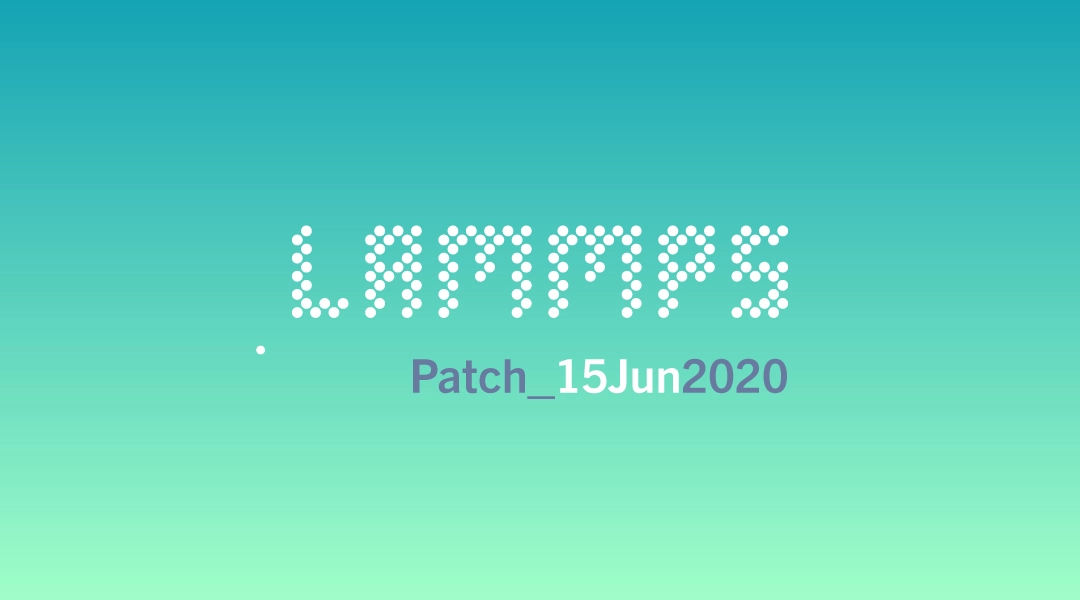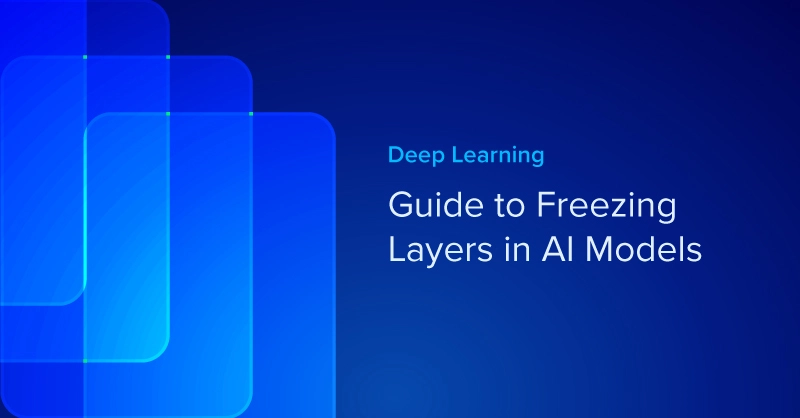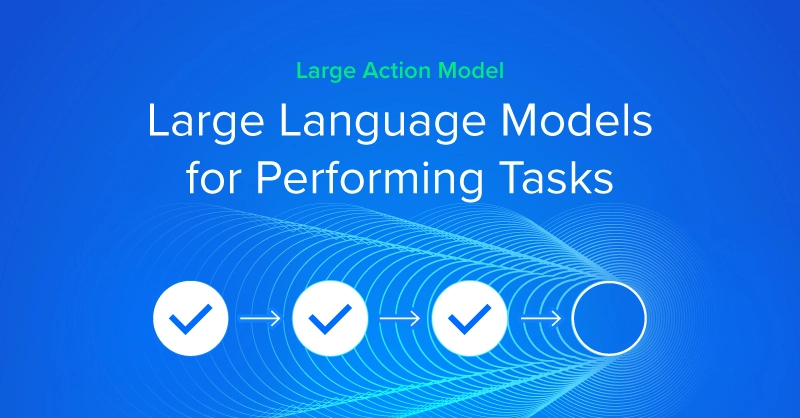
LAMMPS Patch Release Overview
What is LAMMPS primarily used for?
LAMMPS has potentials for solid-state materials (metals, semiconductors) and soft matter (biomolecules, polymers) and coarse-grained or mesoscopic systems. It can be used to model atoms or, more generically, as a parallel particle simulator at the atomic, meso, or continuum scale.
LAMMPS runs on single processors or in parallel using message-passing techniques and a spatial-decomposition of the simulation domain. Many of its models have versions that provide accelerated performance on CPUs, GPUs, and Intel Xeon Phis. The code is designed to be easy to modify or extend with new functionality.
Changes since the patch release 2 June 2020:
- Bugfixes for read_data and read_restart that were introduced during the recent refactoring of the AtomVec class. Additional bugfixes for case of using many fixes that store per-atom data, broken KIM package compilation, and a few minor issues. updates for some singularity definition files. (Axel Kohlmeyer, Temple U) PR #2132
- New package USER-MESONT that adds the
tubular potential model(TPM). This consist of a Fortran library, a pair_style and compute, and tools for generating force field files. Pair stylemesocnt, which implements the same model in C++-only has been moved from USER-MISC to this package (Maxim V. Shugaev & Leonid V. Zhigilei, University of Virginia, Alexey N. Volkov, University of Alabama) PR #1873 - New fix orient/eco to add an “energy conserving orientation” force, which is a superset of what fix orient/fcc and fix orient/bcc do. (Adrian Schratt and Volker Mohles, Ruhr-Uni Bochum)) PR #2126
- Update to Nose-Hoover barostats to allow setting a barostat temperature if there is no temperature compute already included (Joel Clemmer, Ishan Srivastava, SNL) PR #2137
- Document access to contact information for fix wall/gran and fix wall/gran/region and fix some issue with not deleting “expired” contacts (Richard Berger, Temple U) PR #2121
- Remove extra large (potential) files from the distribution and instead download them on demand from downloads.lammps.org when the corresponding package is installed/configured. Apply to pair style mesocnt as first case (Axel Kohlmeyer, Temple U) PR #2139
- Add a “UNITS:” metadata tag to (most) potential files in the potentials folder and code to file readers to check for these tags and report and error if there is a mismatch. Table files generated by
pair_writeandbond_writewill add these as the first line when a file is newly created and all subsequent attempts to append a table will check for consistent units or error out (Axel Kohlmeyer, Temple U) #2159 - Add a sort option to the
reset_idscommand to obtain consistent atom ids in parallel regardless of the number of MPI ranks (Steve Plimpton, SNL) PR #2142 - Continued refactoring of string handling and output formatting by increasing the use of {fmt} and std::string, (Axel Kohlmeyer, Temple U) PR #2127, PR #2128, PR #2148
- Continued refactoring and optimization of file readers to increase code reuse and become thread safe (Richard Berger, Temple U) PR #2122, PR #2144
- Consolidate
union ubufdefinitions in lmptype.h header file instead of individual classes (Axel Kohlmeyer, Temple U) PR #2151 - More tests and unittest updates (Axel Kohlmeyer, Temple U) PR #2123
- Add clang-format support to the C++ sources in the unittest tree (Richard Berger and Axel Kohlmeyer, Temple U) PR #2157
- Utilities to check and correct files in the distribution for whitespace and permission issues (Richard Berger, Temple U) PR #2154
- Various small updates and corrections (various authors) PR #2121, PR #2124, PR #2129, PR #2133, PR #2135, PR #2140, PR #2141, PR #2143, PR #2147, PR #2149, PR #2152, PR #2155, PR #2156, PR #2160, PR #2161
Backward compatibility notices:
- People that want to use the
mesocntpair style now need to install the USER-MESONT package instead of USER-MISC - The potential file C_10_10.mesocnt has been removed from the distribution due to its size. It will be downloaded automatically when the USER-MESONT package is installed for the first time.
This release has 2 assets:
- Source code (zip)
- Source code (tar.gz)
Visit the release page to download them.
About LAMMPS
LAMMPS (Large-scale Atomic/Molecular Massiveley Parallel Simulator) is an open-source molecular dynamics simulator written in C++ from Sandia National Laboratories, and is designed for parallel machines. LAMMPS models an ensemble of particles in a liquid, solid or gaseous state. It can model atomic polymeric, biological, metallic, or mesoscale systems using a variety of force fields and boundary conditions and is easily extensible.

LAMMPS Patch Release 15 June 2020
LAMMPS Patch Release Overview
What is LAMMPS primarily used for?
LAMMPS has potentials for solid-state materials (metals, semiconductors) and soft matter (biomolecules, polymers) and coarse-grained or mesoscopic systems. It can be used to model atoms or, more generically, as a parallel particle simulator at the atomic, meso, or continuum scale.
LAMMPS runs on single processors or in parallel using message-passing techniques and a spatial-decomposition of the simulation domain. Many of its models have versions that provide accelerated performance on CPUs, GPUs, and Intel Xeon Phis. The code is designed to be easy to modify or extend with new functionality.
Changes since the patch release 2 June 2020:
- Bugfixes for read_data and read_restart that were introduced during the recent refactoring of the AtomVec class. Additional bugfixes for case of using many fixes that store per-atom data, broken KIM package compilation, and a few minor issues. updates for some singularity definition files. (Axel Kohlmeyer, Temple U) PR #2132
- New package USER-MESONT that adds the
tubular potential model(TPM). This consist of a Fortran library, a pair_style and compute, and tools for generating force field files. Pair stylemesocnt, which implements the same model in C++-only has been moved from USER-MISC to this package (Maxim V. Shugaev & Leonid V. Zhigilei, University of Virginia, Alexey N. Volkov, University of Alabama) PR #1873 - New fix orient/eco to add an “energy conserving orientation” force, which is a superset of what fix orient/fcc and fix orient/bcc do. (Adrian Schratt and Volker Mohles, Ruhr-Uni Bochum)) PR #2126
- Update to Nose-Hoover barostats to allow setting a barostat temperature if there is no temperature compute already included (Joel Clemmer, Ishan Srivastava, SNL) PR #2137
- Document access to contact information for fix wall/gran and fix wall/gran/region and fix some issue with not deleting “expired” contacts (Richard Berger, Temple U) PR #2121
- Remove extra large (potential) files from the distribution and instead download them on demand from downloads.lammps.org when the corresponding package is installed/configured. Apply to pair style mesocnt as first case (Axel Kohlmeyer, Temple U) PR #2139
- Add a “UNITS:” metadata tag to (most) potential files in the potentials folder and code to file readers to check for these tags and report and error if there is a mismatch. Table files generated by
pair_writeandbond_writewill add these as the first line when a file is newly created and all subsequent attempts to append a table will check for consistent units or error out (Axel Kohlmeyer, Temple U) #2159 - Add a sort option to the
reset_idscommand to obtain consistent atom ids in parallel regardless of the number of MPI ranks (Steve Plimpton, SNL) PR #2142 - Continued refactoring of string handling and output formatting by increasing the use of {fmt} and std::string, (Axel Kohlmeyer, Temple U) PR #2127, PR #2128, PR #2148
- Continued refactoring and optimization of file readers to increase code reuse and become thread safe (Richard Berger, Temple U) PR #2122, PR #2144
- Consolidate
union ubufdefinitions in lmptype.h header file instead of individual classes (Axel Kohlmeyer, Temple U) PR #2151 - More tests and unittest updates (Axel Kohlmeyer, Temple U) PR #2123
- Add clang-format support to the C++ sources in the unittest tree (Richard Berger and Axel Kohlmeyer, Temple U) PR #2157
- Utilities to check and correct files in the distribution for whitespace and permission issues (Richard Berger, Temple U) PR #2154
- Various small updates and corrections (various authors) PR #2121, PR #2124, PR #2129, PR #2133, PR #2135, PR #2140, PR #2141, PR #2143, PR #2147, PR #2149, PR #2152, PR #2155, PR #2156, PR #2160, PR #2161
Backward compatibility notices:
- People that want to use the
mesocntpair style now need to install the USER-MESONT package instead of USER-MISC - The potential file C_10_10.mesocnt has been removed from the distribution due to its size. It will be downloaded automatically when the USER-MESONT package is installed for the first time.
This release has 2 assets:
- Source code (zip)
- Source code (tar.gz)
Visit the release page to download them.
About LAMMPS
LAMMPS (Large-scale Atomic/Molecular Massiveley Parallel Simulator) is an open-source molecular dynamics simulator written in C++ from Sandia National Laboratories, and is designed for parallel machines. LAMMPS models an ensemble of particles in a liquid, solid or gaseous state. It can model atomic polymeric, biological, metallic, or mesoscale systems using a variety of force fields and boundary conditions and is easily extensible.


.jpg?format=webp)


